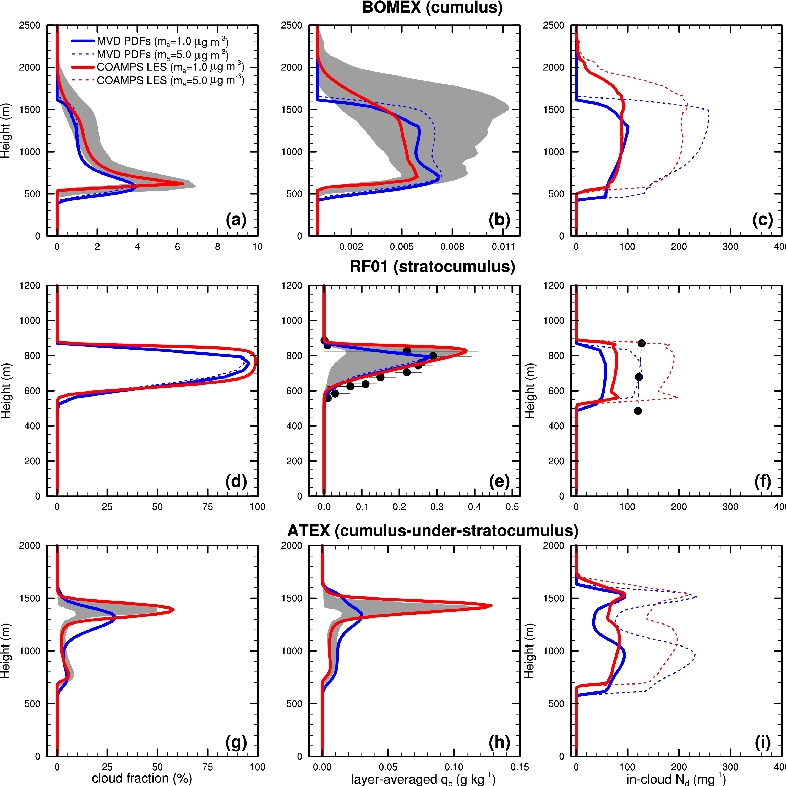October 1st, 2010
Key Findings
- Multivariate probability density functions with dynamics (MVD PDFs) are able to simulate full liquid water path (LWP) responses to increasing aerosol concentrations.
- Dependence of sedimentation on droplet size is essential for full LWP responses.
Multivariate probability density functions with dynamics (MVD PDFs) have been incorporated into the single-column version of GFDL AM3 and extended to treat aerosol activation. MVD PDFs are unique in that they predict the joint distribution of temperature, water mass, and vertical velocity. The distribution of vertical velocity is then a natural link to aerosol activation. This paper presents the first results on the effects of aerosols and precipitation on cloud fraction and cloud liquid using the MVD PDFs and the first results on cloud droplet number concentrations obtained from the distributions of vertical velocity predicted by the MVD PDFs.

Reference:
Guo, H, J-C Golaz, Leo J Donner, D P Schanen, and B M Griffin, 2010, Multi-variate probability density functions with dynamics for cloud droplet activation in large-scale models: Single column tests. Geoscientific Model Development, 3(2), doi:10.5194/gmd-3-475-2010.


